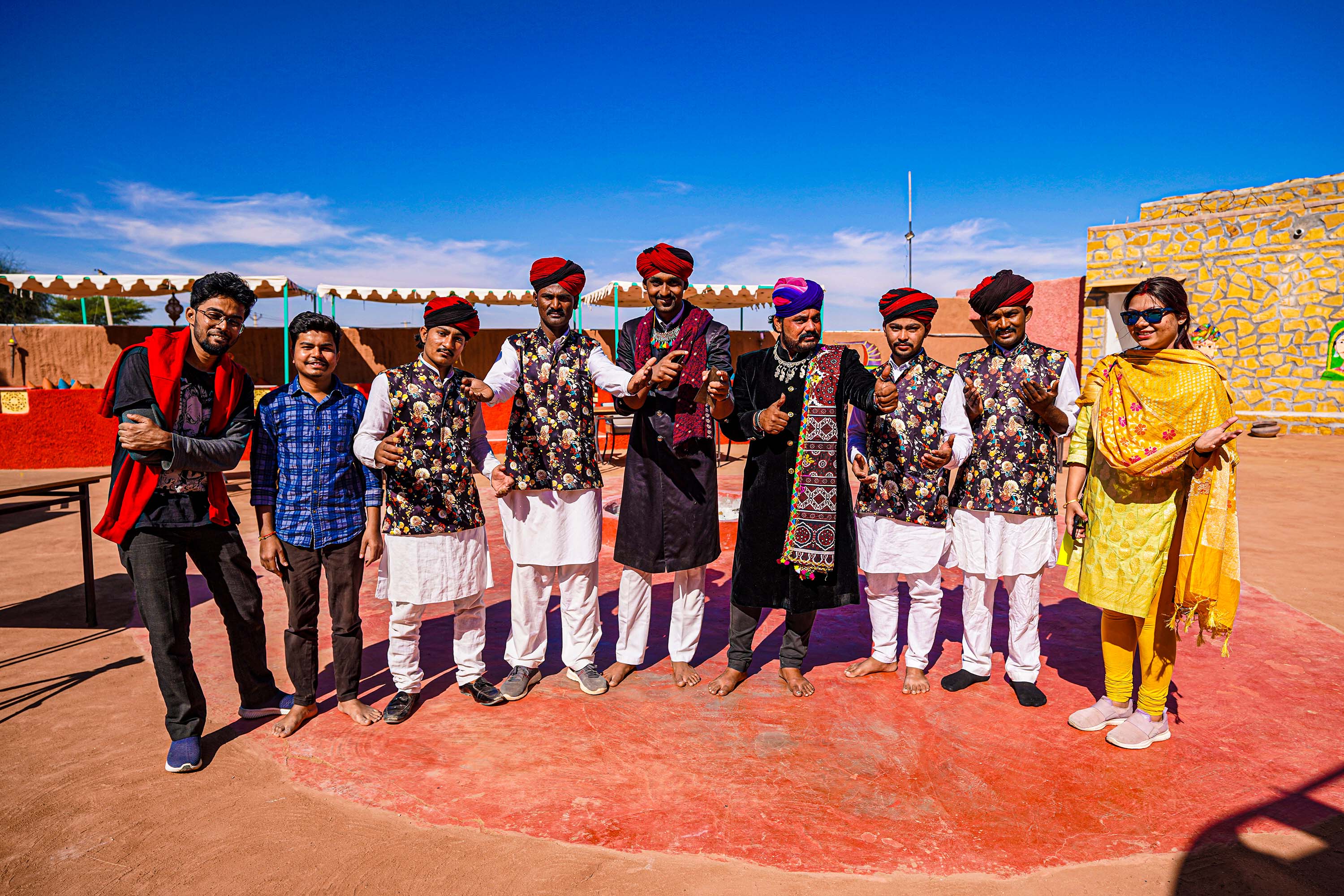
“Give me some music; moody food of us that trade in love.”
As Lateef Khan enunciates it: That music is like an addictive worship. Music has been the lifeline of this artist from the famous Manganiyar community of Rajasthan. Lateef Khan, aged 38, lives in the famous Kalakaar colony of Jaisalmer, and his family has been the pioneers of folk music in Jaisalmer since generations, and he has been singing these folk songs since his childhood, he was brought up in a musical environment.
While explaining the meaning of Manganiyar, Lateef Khan says that their families used to get rewards from royal Rajput families for their singing, hence the name Manganiyar is derived from the Hindi term “Maangna”, which means to ask. Lateef Khan’s eyes light up with an exquisite shine while talking about music. Lateef Khan is an eminent songwriter himself and is fond of composing songs, these songs are based on several auspicious occasions, and describe the human feelings, emotions in a very subtle way.
In his songs, which are mostly played with Harmonium as a basic instrument, Lateef Khan and his group members improvise on percussions with “Khadtaal”, while the time (taal) of the song is kept using two dholaks.
Lateef Khan’s songs are composed in ragas like Malkaush(Malkauns). The name Malkaush is derived from the combination of Mal and Kaushik, which means he who wears serpents like garlands — the god Shiva. Other ragas which are used in his compositions are “bhairava shahi”, “Megh”, “Hindol”, “Deepak” and “Shree” and are set to “Kairvan taal”, a 6 beat cycle. Pictorially these ragas are always shown as males and each of these ragas has eight feminine consorts, always visually shown as females. They further have eight sons or ragaputras. These ragas used by Lateef Khan also hints of influences from Guru Granth Sahib, According to the Guru Granth the first raga created by the Maker was Bhairav, and raga Bhairav had five raginis of which only the first, raga Bhairavi is known today and performed. The folk songs of Rajasthan have maintained the elements of Indian classical music despite the fact that they are freely composed and sung, knowing no rigid rules.
Lateef Khan is greatly influenced by Sufi genre of music and cites the great Maestro Nusrat Fateh Ali Khan as his favourite. According to Lateef Khan, folk music has a power which appeals to everyone. When asked about whether he is worried about the depleting number of folk musicians, he says that nowadays, people don’t understand the importance of folk music and are more oriented towards Bollywood.
Lateef Khan and his group lose themselves in a trance as they were singing their enchanting music in a mesmerizing locale, at the garden of Jawahar Niwas. Their songs are mostly sung for various auspicious occasions like marriage and childbirth. Lateef Khan’s songs combine love with the skill of music, and the result is a masterpiece.
Ho bhala jiyo bhala mhaare ghar ko maalik tu
(Hey spinning yard you’re the owner of the house)
Ho ho bhom charakhla mhaare ang dhoki lo tu, ho ho bhom charakhla hoye bhom charakhla
(Hey great spinning wheel you provide me with clothes to cover my body)
Een charkhe re kaarane nandan ne paranaaye laalji nandan ne parnaaye mhaare hiwde hath dalaai
(Hey great spinning wheel, you feed the guest at my sister-in-law’s wedding)
Mhaare hiwde haath dalaai mhaare ghar ko maalik tu ho ho bhom charakhla
(You gave me the courage to run my home, Oh great spinning wheel)
Lateef Khan would like to carry forward these traditions of his family and impart this art to his coming generations as well, but like all his counterparts in this region, he also lays special emphasis on basic technical education for all. Lateef Khan and his group members, Isaac Khan, Mohammed Nawaz, and Sawan Khan are skilled musicians describe music as a coherent and binding factor and vouch for their community and neighbourhood for providing a cooperative and friendly environment for sustaining this art.
For everyone who has lived, loved and lost, Lateef Khan’s songs will appeal greatly as they cover a plethora of emotions.
“Haazir-ubareshon, laal bane na josho”.
I am waiting for my beloved, and I can look at him clearly if he walks slowly and gracefully.
For these artists, music is like an “Ibaadat” (worship), and this skill only improves with more and more practice. Some of the raagas are used in the purest form while some are used in combination. They also experiment with mixing various raagas like Malkaush and Bhairavi, much like a “Raagamalika” (a garland of raagas) in Carnatic music, blending them effortlessly to create more melodies. Over the years, these artists have helped in preserving and conserving this intangible heritage of the city of Jaisalmer, and this tradition should be continued with time. Truly, when love and skill combine, one should really expect a masterpiece, and Lateef Khan’s music is no less than a masterpiece when it comes to explaining even the most delicate, yet heartfelt human emotions.
